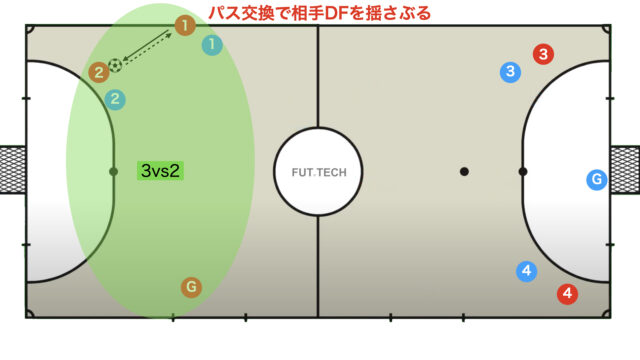Analysis of matches involving top European teams shows that it has become a trend to involve the Goleiro as the fifth FP in attack.
The reason is simple: by creating a greater numerical advantage, the aim is to compensate for qualitative disadvantages.
Although involving the Goleiro in the attack leaves the goal exposed and carries the risk of conceding, working with a shared understanding through sign play (ジョガータ) can link the play to the goal without hesitation.
This article introduces the tactic of the Goleiro’s attacking participation that Sporting—winners of the 2020/2021 Champions League—actually used, along with the strategy employed by Benfica, who reached the Best 4.
Initial Setup
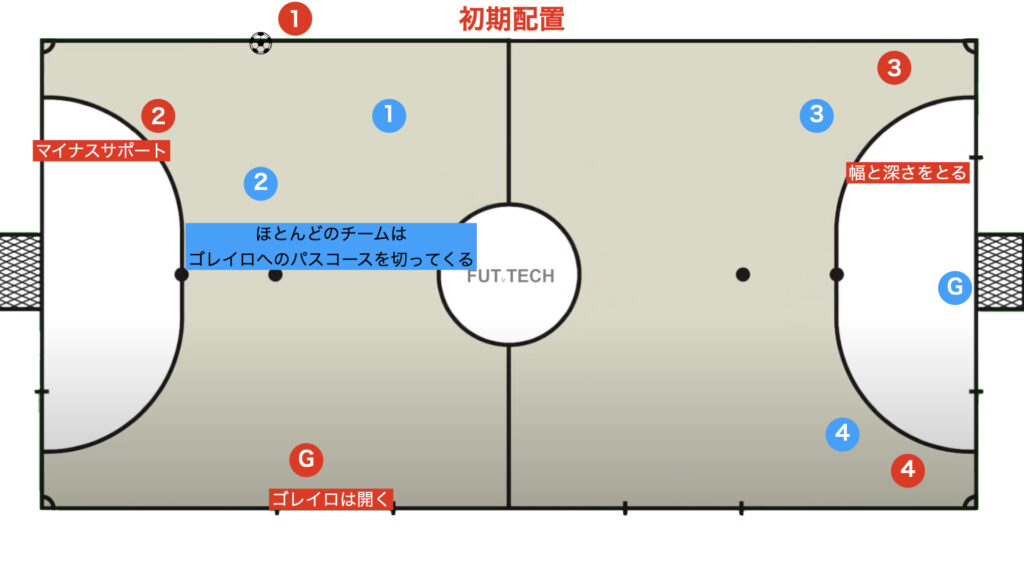
The initial setup is a 3-2 formation—the same as the orthodox own-court kick-in (Goleiro’s attacking participation).
Pattern When the Minus Support Leaves
Forming a 2-3 (2-1-2) Formation
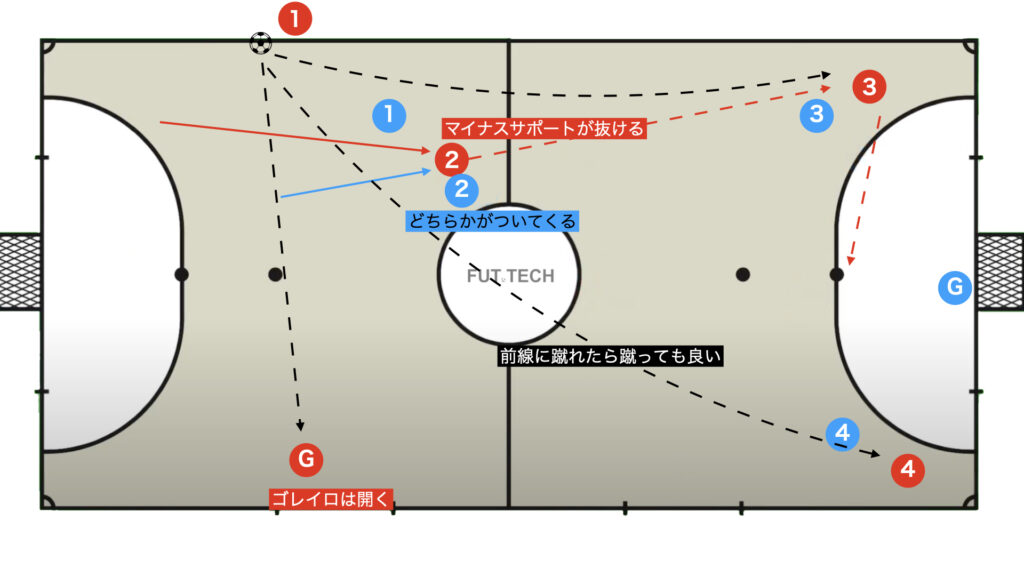
The Minus Support’s Red No. 2 breaks out to the front line.
- Aim for the pivo on the front line (Red No. 3, Red No. 4).
- If they cannot reach the front line, pass to the Goleiro (via a horizontal pass).
Goleiro’s Horizontal Pass → Create a 2 vs 1 in the First Line
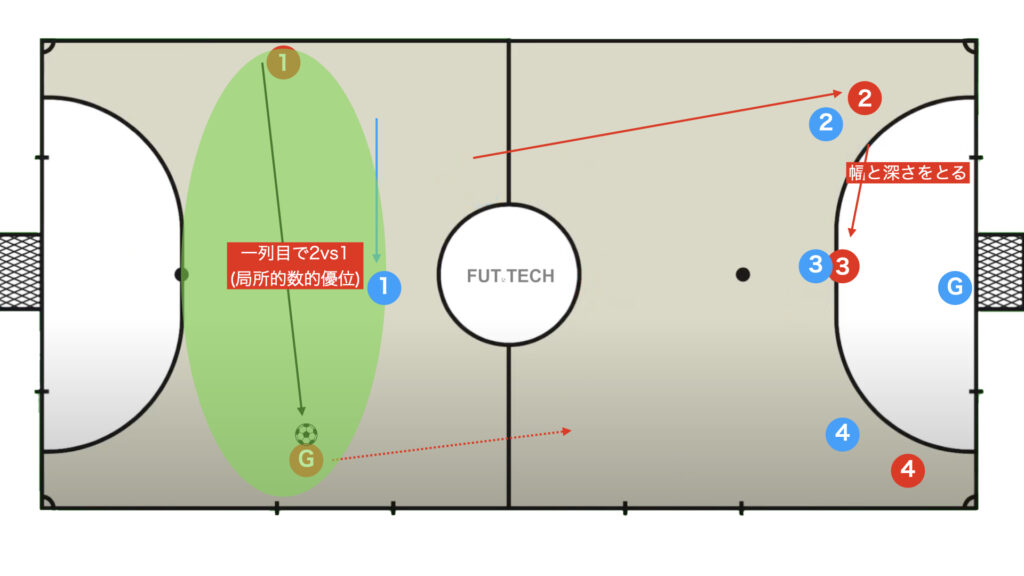
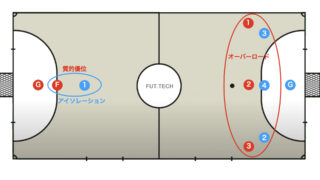
When the Opponent Jumps
Utilize the Space Between the Lines
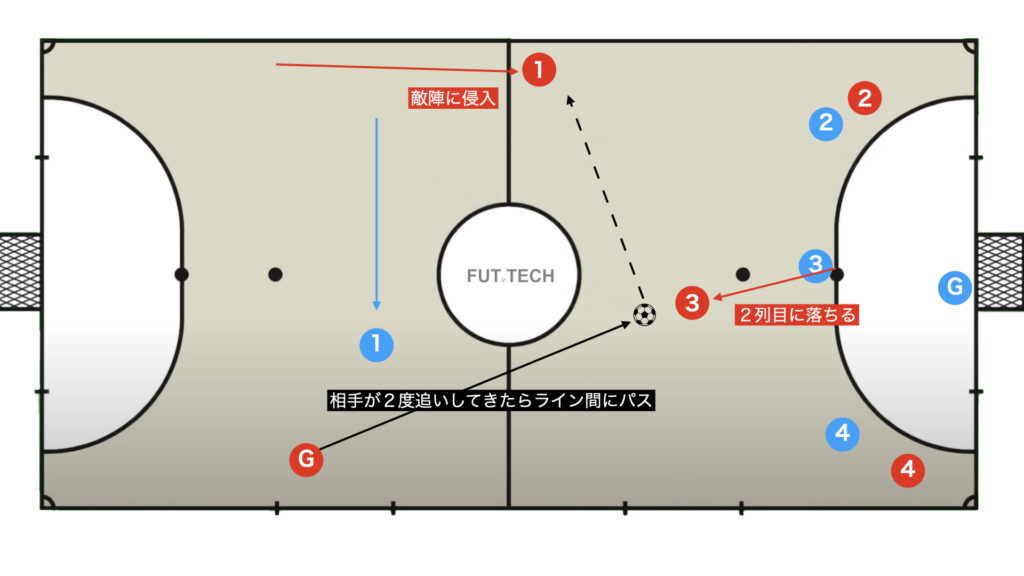
If the opponent presses with a double jump, it is risky for the Goleiro to advance; therefore, it is preferable to pass to a forward player.
At that moment, while a random long ball forward is acceptable, it is preferable, as shown above, for the pivo to drop between the lines and receive the ball.
Form a Numerical Advantage of 4 vs 3 in the Opponent’s Half

By passing to the free Red No. 1 who has penetrated the opponent’s half via the space between the lines, a numerical advantage of 4 vs 3 can be achieved in the opponent’s area.
When a Player Breaks Away and Two Players Remain Up Front

Although this situation is uncommon, if two players remain up front and the opponent jumps, support should be provided from the space between the lines, as shown above.
When the Opponent Does Not Jump or is Slow
The Goleiro Carries the Ball into the Opponent’s Half
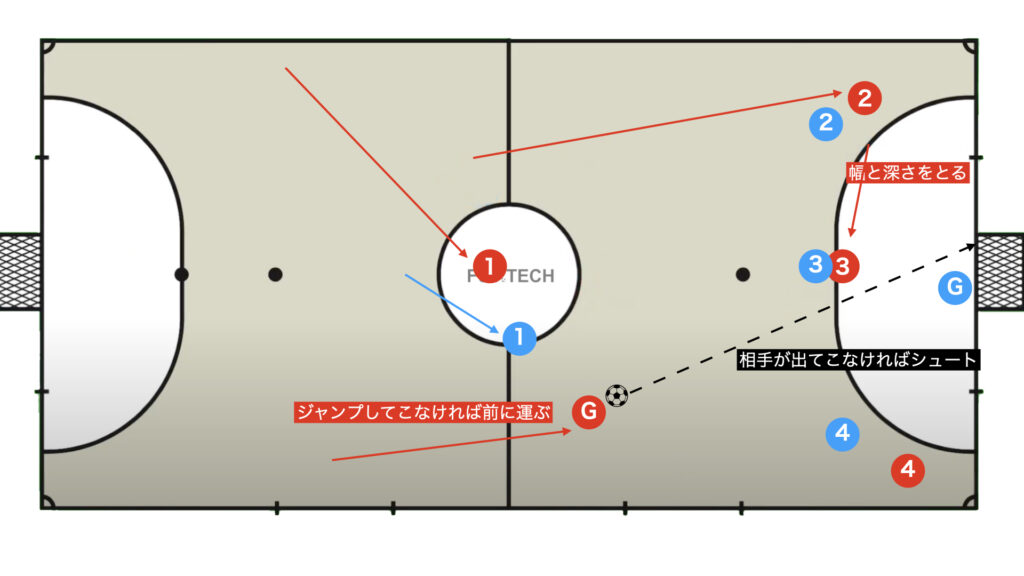
When the opponent does not press twice—or presses twice but cannot catch up—it is effective for the Goleiro to dribble into the opponent’s half.
In such cases, if no opponent comes out, the play should aim directly for a shot.
Since having a shot caught or a loose ball leading to a counter is risky, it is preferable to aim for a pass to the segundo. Alternatively, linking passes to transition into a power play is also an option.
Pass When the Opponent is Drawn Out
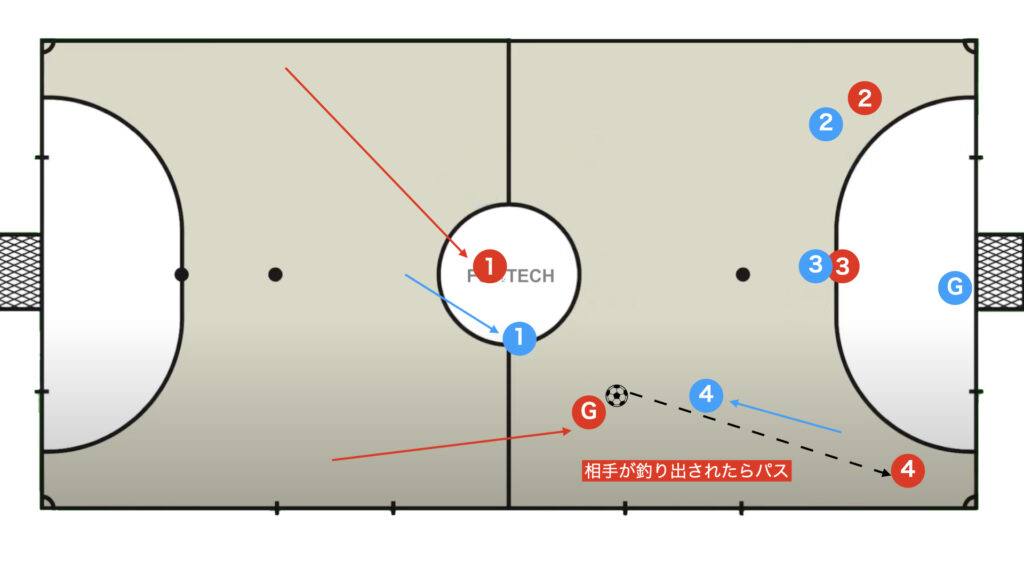
If the opponent is drawn out, a gap will open up somewhere—use that open space.
Pattern When the Kicker Breaks Out
The set-piece described next is a cutting-edge and tricky set-piece used by Sporting, the renowned Portuguese club.
Kicker Breaks into the Rebound Position
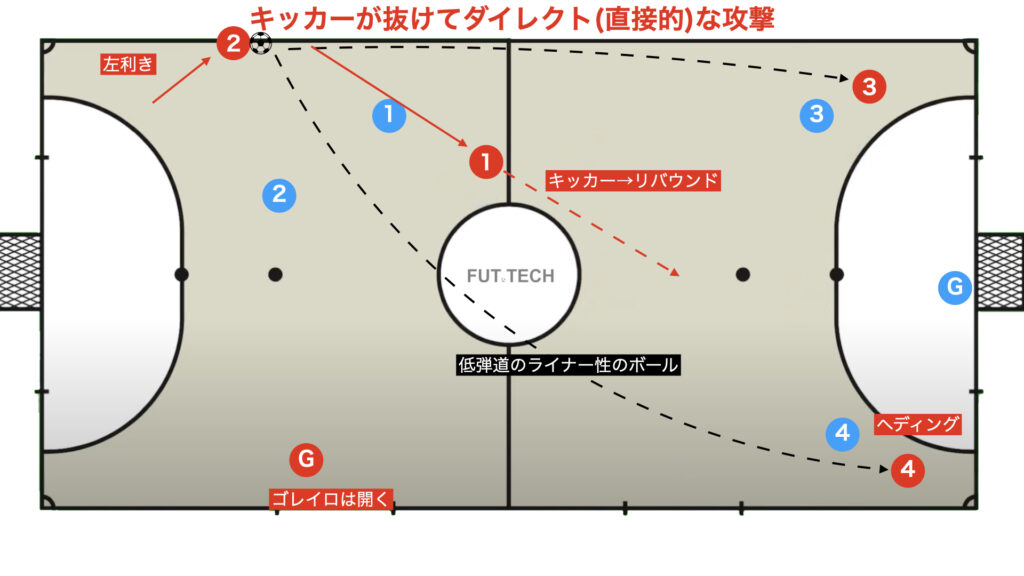
- The pivo on both sides takes width and depth.
- The Goleiro assumes width, hinting at his attacking participation.
- The Kicker moves into the rebound position.
- The Minus Support becomes the Kicker.
Due to the 2020/2021 rule changes allowing the stepping foot to cross the line during a kick-in, this sign play became possible.
When devising tactics, it is important to keep even the finer details of the rules in mind.
Achieving a Finish with Minimal Involvement

- The player in the right-angle position rebounds to turn back.
- The player who runs to the rebound position becomes the shooter.
- The player replacing the Kicker moves up to the center circle to maintain balance.
- The Goleiro covers the final line.
When dealing with a ball turned back with a header by the Minus Support, the Goleiro is reluctant to come forward; the charm of this set-piece lies in causing hesitation in the opposing DF just in front of the goal, often resulting in a scrappy finish.
Thus, while this set-piece’s strength is that it directly aims for the goal with minimal involvement, it demands high passing accuracy from the Kicker and the ability to head the ball on the return at the front line.
Conclusion
How was it?
The Goleiro’s attacking participation tends to make players more nervous since it leaves the goal exposed.
However, by preparing a pre-designed plan as a team and practicing repeatedly, you can play without hesitation in matches.
If you wish to incorporate the Goleiro’s attacking participation as a team, it is recommended to coordinate and agree on the plan rather than playing selfishly.
Thank you very much for reading this article to the end.
If you found this article useful, please consider sharing it using the social media share buttons above.
We regularly share valuable insights on futsal tactics on Twitter, so if you haven’t followed us yet, we’d appreciate your support!
We are committed to raising the level of futsal in Japan by sharing high-quality information through discussions with individuals who have coaching experience in the F.League and overseas.
If you have any questions or notice any mistakes, feel free to leave a comment below.
We update our articles regularly, so if you’d like to keep reading, please bookmark our site or search for “FutTech”!
